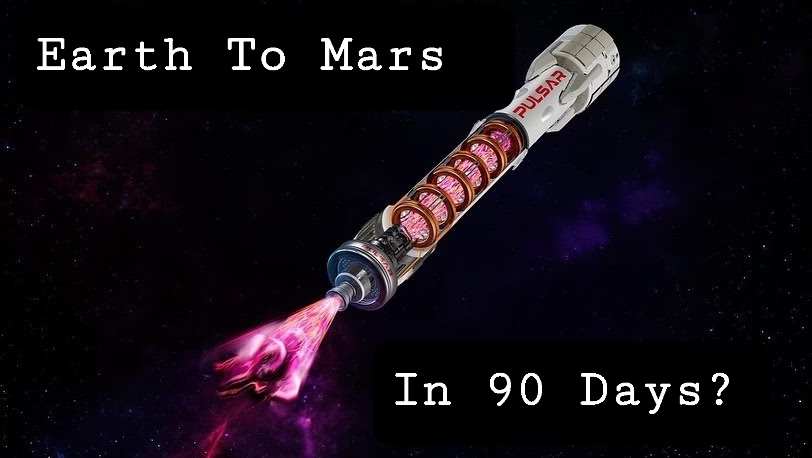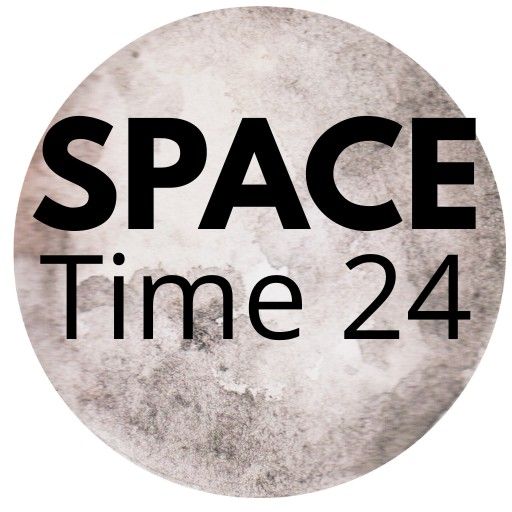Pulsar Fusion’s Sunbird nuclear fusion rocket aims to reduce travel time across the solar system. Discover how this UK innovation could change space propulsion forever.

Sunbird: The UK’s Nuclear Fusion Rocket Aiming to Redefine Space Travel
The prospect of traveling to other planets has long fascinated scientists, engineers, and visionaries. While current space technologies have enabled satellite launches, lunar missions, and robotic exploration of Mars, the dream of fast, efficient interplanetary travel has remained just out of reach. That, however, may soon change. A new space propulsion concept from the United Kingdom, called the Sunbird nuclear fusion rocket, is being developed to drastically cut the time required for journeys beyond Earth.
This revolutionary technology is the work of Pulsar Fusion, a British company working at the forefront of nuclear fusion propulsion. The Sunbird concept introduces a new paradigm in how spacecraft might one day navigate the solar system, using the immense power of nuclear fusion to enable faster and more sustainable deep-space missions.
What is the Sunbird Nuclear Fusion Rocket?
The Sunbird is a proposed nuclear fusion-powered space vehicle that uses a propulsion system unlike any traditional chemical rocket. Instead of burning fuel through combustion, the Sunbird’s propulsion is based on the principles of nuclear fusion—the same process that powers the sun.
At the heart of the Sunbird is a system known as the Dual Direct Fusion Drive (DDFD). This engine is designed to use fusion reactions to generate both thrust and onboard electrical power, allowing the spacecraft to move efficiently over long distances. The system is expected to deliver a specific impulse—a measure of propulsion efficiency—of up to 15,000 seconds, which is vastly superior to current rocket technologies. It also aims to produce about 2 megawatts of power, a level that could dramatically change mission profiles for human and robotic space exploration.
Why Nuclear Fusion?
Nuclear fusion occurs when atomic nuclei combine under extreme pressure and temperature, releasing vast amounts of energy. Unlike nuclear fission, which splits atoms and produces hazardous radioactive waste, fusion is cleaner and potentially more sustainable. The Sunbird design aims to capitalize on this cleaner energy source to enable long-duration space missions with minimal fuel consumption.
Fusion propulsion promises to overcome many of the limitations faced by conventional chemical rockets, which are limited by low efficiency, heavy fuel requirements, and long travel times. With the Sunbird’s fusion engine, missions to Mars could take weeks instead of months. Journeys to the outer planets like Jupiter and Saturn, which currently take years, could be shortened significantly, opening new scientific and commercial opportunities.
Technical Specifications: Sunbird nuclear fusion rocket
Although the Sunbird is still in its conceptual and developmental stages, the proposed specifications offer a glimpse into its groundbreaking potential:
- Propulsion System: Dual Direct Fusion Drive (DDFD)
- Specific Impulse: 10,000 to 15,000 seconds
- Power Output: 2 megawatts
- Fuel Type: Likely deuterium and helium-3 or similar low-radioactivity isotopes
- Operation Environment: Space-only propulsion; not designed for atmospheric launch
- Mission Type: Interplanetary transport of crew, cargo, or robotic systems
These numbers point to a propulsion system that is not only far more efficient than current engines but also suitable for sustaining power over months or even years of continuous operation.
Development and Research Progress: Sunbird nuclear fusion rocket
Pulsar Fusion has spent over a decade researching plasma physics, magnetic confinement, and high-temperature materials needed for fusion propulsion. The company has already built and tested several plasma engines in laboratory conditions. While these prototypes have not yet reached full fusion ignition, they demonstrate the company’s progress toward creating a working fusion-powered propulsion system.
Engineers at Pulsar Fusion are currently focused on building the infrastructure needed to sustain and test fusion reactions in vacuum conditions similar to space. This includes specialized test chambers, plasma injectors, and magnetic field generators that replicate the extreme conditions required for controlled fusion.
One of the critical challenges ahead is developing a containment system strong enough to handle the high temperatures and plasma flows without degradation. Another is building a nozzle capable of converting fusion energy into directional thrust without losing efficiency.
The Vision Behind Sunbird
The Sunbird concept is driven by the ambition to make fast interplanetary travel a reality within the next decade. The rocket is envisioned not just as a science experiment but as a practical spacecraft that could carry humans and heavy cargo across the solar system.
For missions to Mars, the Sunbird could cut round-trip durations significantly, enabling more frequent launches and safer returns. This would be especially valuable for long-duration missions, where time spent in microgravity and exposure to cosmic radiation are critical risks for human health.
Beyond Mars, the Sunbird could support robotic exploration of the outer planets and their moons. Missions that currently require decades of planning and execution might become more accessible. Scientists could explore distant targets like Europa, Titan, or even the Kuiper Belt with unprecedented speed and flexibility.
How the UK Is Positioning Itself in the Space Sector
The development of the Sunbird rocket represents a significant step for the UK in the global space industry. While countries like the United States, China, and Russia have long led in space exploration, the United Kingdom is rapidly emerging as a competitive player, particularly in the field of advanced propulsion and clean space technology.
Pulsar Fusion is one of several private firms in the UK receiving attention for their work in high-efficiency propulsion systems. By focusing on fusion technology, the company aims to give the UK a technological edge in both commercial and governmental space missions. The British government has shown interest in supporting private-public collaboration in next-generation space technologies, including propulsion, satellite systems, and orbital infrastructure.
Broader Applications of Fusion Propulsion
The advantages of fusion propulsion extend far beyond traditional exploration. Some potential applications include:
- Space Logistics and Cargo Transport: Sunbird could deliver materials, supplies, or construction equipment to lunar or Martian bases quickly and efficiently.
- Orbital Tugs: Fusion-powered vehicles could move satellites between orbits or to higher altitudes, reducing dependency on expendable rockets.
- Space Power Generation: The fusion engine itself could serve as a power plant for future space stations, research labs, or habitats.
- Planetary Defense: In emergency scenarios, a fusion-powered spacecraft could be used to intercept and redirect potentially hazardous asteroids.
Environmental and Safety Considerations: Sunbird nuclear fusion rocket
One of the strengths of nuclear fusion is its potential to minimize environmental impact. Unlike fission-based engines, fusion propulsion does not rely on radioactive materials that generate long-lasting waste. Additionally, the energy output per unit of fuel is significantly higher, reducing the amount of material that needs to be launched into orbit.
That said, building and testing a fusion engine is not without challenges. Engineers must address safety concerns related to high-energy plasma containment, electromagnetic fields, and thermal management. However, experts suggest that fusion propulsion is much safer than other nuclear options and poses less risk during failure scenarios.
Roadmap to Reality: Sunbird nuclear fusion rocket
The Sunbird nuclear fusion rocket is currently in the concept development and testing phase, but Pulsar Fusion has outlined a roadmap that could see space-based demonstrations within the next decade. The roadmap includes:
- Advanced Ground Testing: Continuing to refine plasma engines and magnetic containment.
- Prototype Fusion Drive: Building and testing a full-scale drive in controlled conditions.
- In-Orbit Demonstration: Launching a test version of the engine on a small satellite.
- Mission Integration: Collaborating with space agencies for operational use in exploration missions.
Pulsar Fusion is also in discussions with academic institutions and space agencies for cooperative research. These partnerships will be vital in transitioning from laboratory experiments to practical spacecraft applications.
Conclusion: Sunbird nuclear fusion rocket
The Sunbird nuclear fusion rocket represents a bold new chapter in space propulsion technology. Developed by British engineers, this concept offers a powerful alternative to conventional rockets, with the potential to revolutionize how humans and machines travel through space. By using the immense energy of fusion reactions, Sunbird could significantly reduce travel times to distant planets, open new exploration pathways, and redefine the limits of what is achievable in space.
Though challenges remain before the Sunbird becomes a flight-ready system, the vision behind it is both compelling and realistic. As Pulsar Fusion continues its research, the United Kingdom may soon become a leader in next-generation space propulsion, helping to make interplanetary travel a routine part of the orbital journey.
FAQs: Sunbird nuclear fusion rocket
Q1. What is the Sunbird nuclear fusion rocket?
The Sunbird is a conceptual fusion-powered spacecraft being developed by UK-based Pulsar Fusion. It uses a Dual Direct Fusion Drive (DDFD) that generates thrust by fusing atomic nuclei, offering far greater efficiency and power than conventional chemical rockets.
Q2. How does fusion propulsion work in space?
Fusion propulsion works by heating and fusing light atomic nuclei—like deuterium or helium-3—inside a magnetically confined plasma chamber. The resulting high-energy particles are ejected to produce thrust. This process mimics the way the Sun generates energy, but on a much smaller, controlled scale.
Q3. How is the Sunbird different from a chemical rocket?
Chemical rockets rely on burning fuel for thrust, which limits their efficiency and range. The Sunbird, using fusion, is expected to achieve specific impulses of up to 15,000 seconds—far beyond what chemical propulsion can offer. This means it can travel faster and farther using much less fuel.
Q4. Could Sunbird reduce the time needed to travel to Mars?
Yes. With its high-efficiency propulsion system, the Sunbird could potentially cut Mars travel time from the usual 6–9 months to just a few weeks, significantly reducing exposure to space radiation and psychological stress for astronauts.
Q5. Is the Sunbird ready to fly?
No. The Sunbird is still in the research and development phase. Pulsar Fusion is currently testing plasma-based systems and working toward a fusion-powered prototype. Operational flights may be possible in the next decade if development milestones are met.
Q6. What kind of fuel will the Sunbird use?
The Sunbird is expected to use nuclear fusion fuels such as deuterium and helium-3, which are both low in radioactivity. These fuels are more sustainable and safer than traditional fission-based nuclear materials.
Q7. Will fusion rockets be safe for humans and the environment?
Fusion propulsion is generally considered much safer than nuclear fission. It produces little to no long-lived radioactive waste and has minimal environmental risk. Moreover, fusion engines operate in space, far from Earth’s biosphere, further reducing potential hazards.
Q8. What missions could benefit from Sunbird’s technology?
The Sunbird could be used for:
- Human missions to Mars and beyond
- Deep-space robotic probes
- Rapid cargo transport between planets
- Space station power systems or tugs for orbital adjustments
- Future asteroid mining or planetary defense missions
Q9. Who is behind the Sunbird project?
The Sunbird is being developed by Pulsar Fusion, a British aerospace company specializing in advanced propulsion technologies, including electric plasma engines and nuclear fusion concepts.
Q10. When could the Sunbird become operational?
If technical challenges are overcome and funding continues, the Sunbird could undergo in-space testing by the early 2030s. A fully functional interplanetary vehicle may be viable within two decades, depending on regulatory and scientific progress.
Nuclear Propulsion in Space: Is It Safe Option to Make Multiple Trips On Mars?
